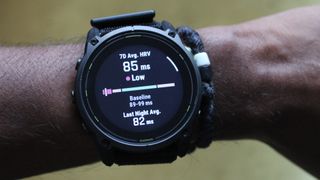
The brightness of the moon may dull it slightly this year, but it's worth keeping an eye out for "shooting stars" during this weekend's peak of the strongest annual meteor shower—and the only one from the remains of an asteroid. Here's everything you need to know about the Geminid meteor shower in 2024. When Is The Geminid Meteor Shower? The Geminid meteor shower stretches from November 19 to December 24, though the peak night for activity is Friday, December 13, into the early hours of Saturday, December 14.
That's the night to aim for, though the few nights on either side should also be good, with clear skies allowing. “The best time to view the Geminid meteor shower is around 2 a.m.

local time when the radiant point is highest in the sky,” said Shyam Balaji, researcher in astroparticle physics and cosmology at King’s College London, in an email. that's when you are on the night side of Earth as it travels head-on through the meteor stream cloud. “However, you can start watching from mid-evening onwards,” said Balaji.
Up to 120 "shooting stars" per hour can be visible, though the presence of an almost full moon may make them harder to see, but Geminds can be bright and intensely colored, according to the American Meteor Society . You may even glimpse a multicolored “Earth-grazer” fireball, a very bright meteor that briefly enters Earth's atmosphere and then leaves again. Geminids: Where To Look The Geminids are so-called because they always appear to come from the area of the night sky, where you’ll find the constellation of Gemini.
“Look towards the constellation Gemini, which is where the meteors appear to originate,” said Balaji. “The radiant point is near the bright star Castor in Gemini.” At this time of year, Gemini is to the upper left of Orion (look for its three-star Orion's Belt).
Although they will all appear to come from Gemini, shooting stars can appear anywhere in the night sky. The best advice is to generally look east, about halfway up the sky, and avoid using your smartphone, which will both distract you and banish your night vision. What Causes The Geminids? A shooting star is seen when dust collides with the Earth's atmosphere.
It heats up and glows for a split second as it discharges heat as light. Geminid meteors are caused by dust and debris left in the inner solar system, not by a comet — as is usually the case for meteor showers — but by an asteroid called 3200 Phaethon, which hurtles through the solar system every 18 months. “The unusual colours of the Geminid meteors are due to the presence of various metals in the meteoroids, such as sodium and calcium,” said Balaji.
“These elements burn up in the Earth’s atmosphere, creating bright and colourful streaks.” The Geminids are currently getting more productive each year, thanks to the gravitational pull of giant planet Jupiter on 3200 Phaethon's debris stream, which is bringing it closer to the Earth's orbital path around the sun. Wishing you clear skies and wide eyes.
.















